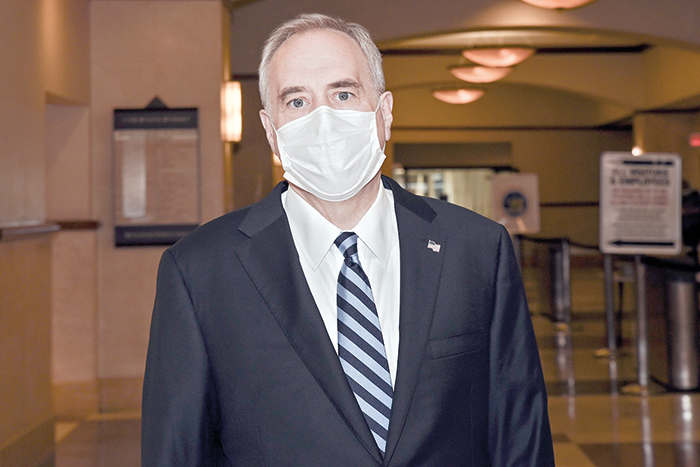Photo Courtesy of Comptroller DiNapoli’s Office
“The MTA’s mounting debts and devastated revenue make it unlikely that it can afford all the work it planned,” Comptroller DiNapoli said.
By Forum Staff
State Comptroller Tom DiNapoli’s annual report on the Metropolitan Transportation Authority’s debt levels, which was released on Monday, found the MTA does not have the resources to fully fund its $54.8 billion 2020-2024 capital program, which is vital to improving riders’ experience and bringing them back to the transit system.
The report finds that delays to capital projects, severe revenue declines, and increased borrowing, caused by the COVID-19 pandemic, are making the MTA capital program to repair, modernize and expand the transit system appear increasingly unrealistic.
The MTA’s outstanding long-term debt has tripled in the last two decades and the percentage of revenue it must put toward those debts has also grown dramatically. During the past decade, the MTA generally spent about 16 percent of its operating revenue on debt payments, but by 2024 debt service will devour 23 percent of revenues. Debt service is projected to reach $3.8 billion by 2028, which is $1.1 billion or 42 percent more than in 2020.
DiNapoli’s report also found:
- The MTA was devastated by the loss of farebox and dedicated tax revenues and has only balanced short-term budgets with $14.5 billion in federal aid and $2.9 billion in borrowing for operating purposes.
- The MTA’s outstanding long-term debt reached $38 billion in 2020 and will approach $47 billion by 2023. This may be higher if the MTA includes the issuance of $6.9 billion in anticipated debt for its 2020-2024 program.
- The MTA has a history of not meeting its capital commitment goals. For example, its stated goal was to put an annual average of $7.1 billion toward capital projects from 2016 through 2019, but it only committed $5.8 billion annually.
- The $54.8 billion 2020-2024 capital program is the MTA’s largest ever, and with that program just beginning it had a goal of committing $13.5 billion on projects in 2020 across all programs. With the pandemic pausing projects that were not federally funded or using in-house labor, only $5.4 billion was committed that year. For the 2020-2024 program, only 100 of 517 projects were completed or even started. The MTA’s total capital commitment goal for 2021 is $6.2 billion.
- State legislation commits New York state and New York City to provide $3 billion to the 2020-2024 program. The state has appropriated its full commitment and expects to issue $10 billion of its own bonds to fund this and prior commitments. However, there is a risk that the state might decide not to bond the full amount, as its own capacity under the state’s debt-reform limit becomes strained. NYC only appropriated $200 million so far and faces its own fiscal challenges.
- The MTA expects to get $10.7 billion in federal support for the 2020-2024 capital program, including $2.9 billion for the Second Avenue Subway, but this is not certain.
- Congestion pricing is projected to bring $15 billion to the 2020-2024 capital program. Final approval is expected later this year, but revenue won’t begin to appear until 2023.

